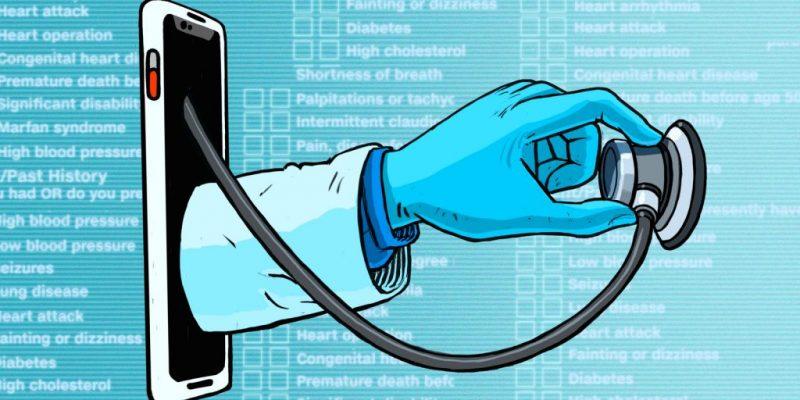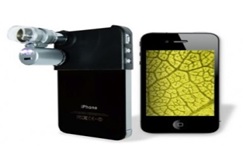
- August 30, 2020
- By admin_panel
- Comments 0
Telemedicine – New Face of Healthcare
The idea of ‘getting things done without making much effort’ has always been a glamorous lure for human being. And so, human race is working every second to get one step closer to this limitless vision. One such field of creativity which is nothing short of a revolution is – ‘Telemedicine’.
Telemedicine makes use of electronic communication and software to monitor and treat patients sitting at a distant or remote location. The technology has turned really advantageous in the pandemic era of COVID-19, where people do not want to visit hospitals for regular ailments. In the United States alone, Telemedicine visits surged to 50 percent in March 2020 and are on pace to reach 200 million from a base of 36 million. Telemedicine is also trying to bridge the gaps between the rural and urban areas, by making health accessible and affordable to people living in rural households.

(Picture Credits)
Several start-ups like Doctor on Demand, Heartbeat Health, Livi, and TiaTELE have been placing their foot in this field. Most of these companies provide remote tech-visits to the doctors. For instance, Teladoc provides a convenient and affordable option that allows patients to talk to a U.S. board-certified physician. On all these platforms, the tech-visits to the doctor will include filling of forms, medicine delivery at your doorstep, and easy transactions as well. The data of the patient is uploaded easily using technology, helping the doctor to provide better treatment to the patient.
There are several new innovations coming up in this field. A few of these intrigued us and thus, are worth sharing with our readers.
Use cases beyond tele-consultation:
1)Tele-Microscopy (A Phone-based Microscope) University of California has recently got a patent published (Patent Application Number – US20200159001A1) around its famous cell-phone based microscope named as ‘CellScope’. The device is built at the Fletcher lab located in the University campus. CellScope is a mini microscope (as shown in Figure 1) that can be connected to the cell phone’s camera to take digital images of a sample. The device has a magnification lens (for 60x magnification) that is further linked to LED light source. User can adjust the angle of the light source to get better resolution of the sample. Using CellScope, Patients can take images of blood-sample and sputum that can be shared wirelessly with the healthcare practitioner for diagnosis. Researchers have demonstrated diagnostic-quality imaging of diseases like tuberculosis, sickle cell, and malaria using this technology. This project is being accepted worldwide. The American late-night talk show- The Colbert Report’s Anchor, Stephen Colbert got an ear examination on national television using the CellScope model. This invention is bringing a revolution in the tech world and strengthening telemedicine every day.

Figure 1 – An iPhone equipped with a microscope
2) Robots to our Rescue Robots are being used to fight the COVID-19 pandemic in different parts of the world. For instance, a dog-like robot named ‘Spot’ (shown in Figure 2) has been deployed in parks of Singapore to remind people of social distancing. Since June, these robots are also available for purchase in the United States and cost approximately $74,500 (Boston Dynamics) per robot. Several other countries like China, South Korea, and Tunisia have taken the assistance of robots to ease the medical strain caused by COVID-19. Similarly, Telemedicine is bringing forth updates in its robotic dimension. Let us take an example, imagine a land experiencing one of the worst disasters in its history, leading to numerous casualties. But the doctors cannot reach there due to some human limitations. This is where robots come in the scenario. Recently, a Chinese company Shanghai Yishuo Network Technology Co., Ltd. filed a patent (CN209966410U) suggesting a telemedicine service robot that does not require a doctor. This robot locates and reaches the patient. Subsequently, the patient can utilize the stethoscope to carry out the auscultation of the heart and lungs. This data will be recorded by the robot and will be uploaded on the data cloud. Thus, supplying the data to the doctor sitting at the far end. The doctor can, subsequently, analyze the data and give a possible diagnostic suggestion to the patient. Therefore, a lot of time can be saved, and efficiency can be increased.

Figure 2 – Dog-like robot ‘Spot’ in a park in Singapore
3) Monitoring Remote Patients As we have mentioned in our earlier blogs, the era of 5G Technology is almost here and telemedicine is keeping up with this fast pace of technology. Not to our surprise, even tech giants like Google do not want to miss out on this golden opportunity. Google (United States), recently, filed a patent (US20200196915A1) for an invention which uses active InfraRed radiations on its subject patient to monitor his sleep. Using this invention, the breathing rate and heart rate can also be monitored. Similarly, Chinese medical association has released number of inventions related to remote monitoring and nursing system for liver transplantation patients. Such monitoring of patients remotely can compensate for the shortage of nurses and also ensures social distancing during the pandemic times.
4) Is it possible to provide practical trainings during this pandemic? While the pandemic has put a halt on all kinds of practical trainings, telemedicine provides a solution to this problem statement as well. Countries like China have come up with models (CN210200024U) like point to point telemedicine teaching devices which enables new doctors to quickly and skilfully perform complicated operations like that of heart and other complicated organs. It also enables them to do repeated practices of operations at the convenience of their homes on models which resemble the real organs (shown in Figure 3). This will also help to meet the large demand for skilled doctors. These smaller steps that we are taking every day are giant leaps in the scientific world, as they prepare us to fight against situations like COVID-19.

Figure 3 – Doctors practising on a model human
5) Non-Invasive Glucose Monitoring
Let us take another application of Tele-medicine where glucose monitoring of patients is done remotely. Currently, the people who suffer from diabetes use a blood glucose monitoring method. This kind of method may discourage patients to check sugar level regularly. But what if we tell you, all you have to do in this non- invasive method, is open your eyes and look. Seems unbelievably easy, right? This is done by analyzing the optical angular difference and the energy difference obtained using the method. The credit for this non-invasive glucose monitoring method goes to the Taiwan Biophotonic Corporation, for which their patent (Patent No. – US10631763B2) was recently granted. Another company working to develop a non-invasive way to measure blood glucose levels using an optical device is Lein Applied Diagnostics.
While we discussed number of application areas of Tele-medicine, an additional dimension that is covered by Telemedicine is the factor of embarrassment or hesitation in patients. Certain diseases like AIDS, erectile dysfunction, etc. are considered taboo in the society and the patients suffering from it are often embarrassed to get themselves checked. Telemedicine provides the privacy that these patients require.
Telemedicine – A new normal for Healthcare
The COVID-19 pandemic has stretched healthcare systems to the brink. All our headlines might be occupied with Coronavirus, but patients are still getting sick due to other diseases and injuries. This has led doctors to look for other ways to treat them while minimizing contact. This is where Telehealth plays an imperative role. Start-ups like Teleclinic, Zavamed, Kaiku Health, and many more have boomed since the inception of COVID-19. Roy Schoenberg, CEO of Amwell, in a conversation with Healthcare Dive, said, “There are generations where nothing happens. There are decades where nothing happens. And there are weeks when decades happen and that’s exactly what we’ve gone through.”
Long story short, Telemedicine can be the new face of healthcare. We hope that you are keeping up with the pace!

